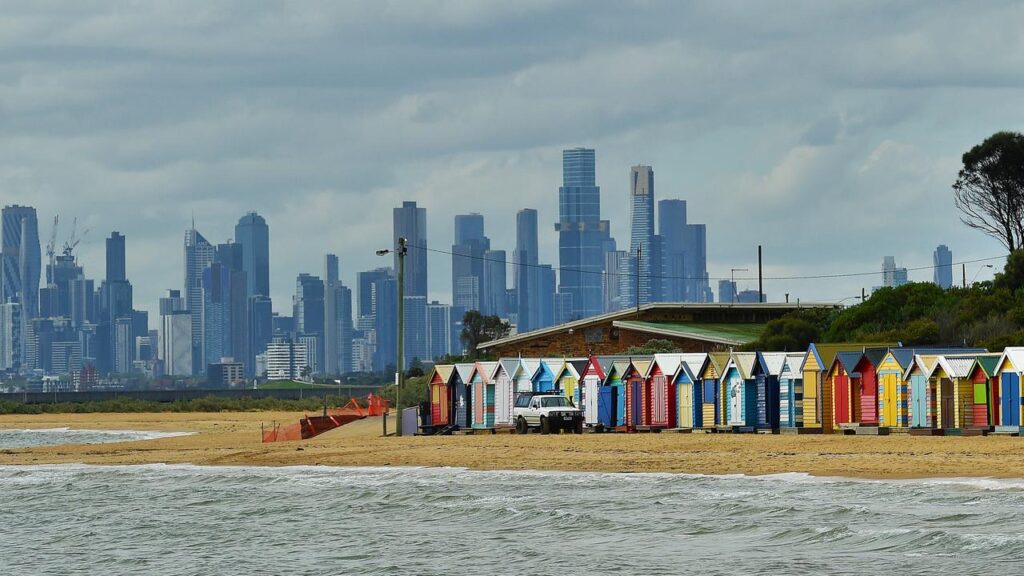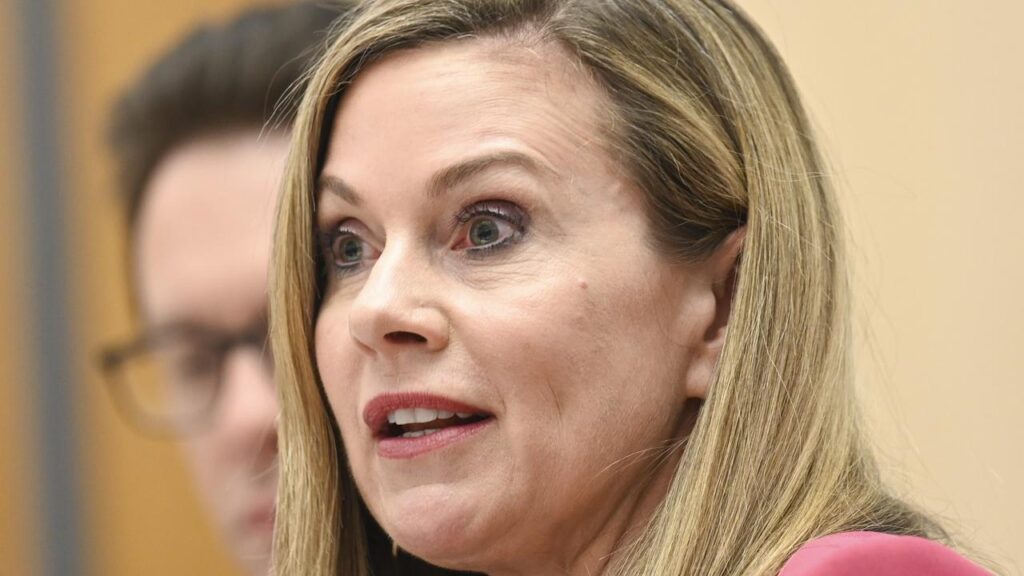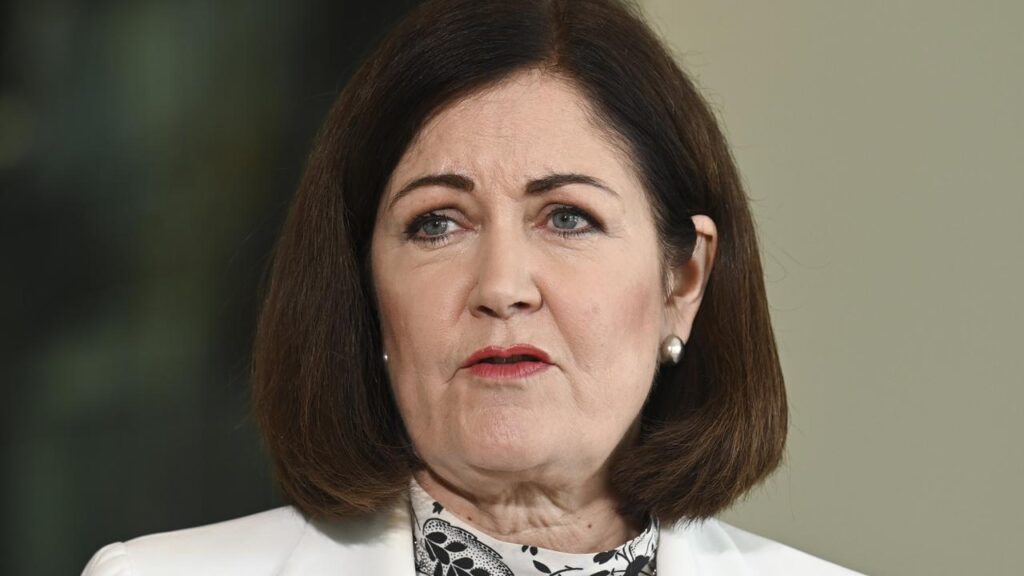‘All options’: Australia’s looming water crisis as immigration drives population to 40 million by 2063
Written by admin on November 25, 2024
Australia is on track to add the equivalent of another Sydney, Melbourne and Perth to its population over the next four decades largely through immigration, but there has “surprisingly little” discussion about the elephant in the room — what are they going to drink?
A new paper from lobby group Sustainable Population Australia (SPA), published on Monday, argues that Australia, the driest inhabited continent on earth, is sleepwalking into a major crisis.
Authorities are being forced to turn to expensive technologies like desalination to supplement already-stretched water sources, based on naive “techno-optimism” in future breakthroughs that will bring costs down, the paper argues.
As it stands, household water and sewage bills are predicted to increase in real terms by two-and-a-half times by 2040 and six-fold by 2067, according to a forecast by Infrastructure Australia.
Urban water authorities expect population growth will require adding anywhere from 850 gigalitres to 1450 gigalitres of additional annual supply to capital cities over coming decades — a gigalitre is one billion litres of water, or enough to fill 400 Olympic swimming pools.
“The phrase ‘all options on the table’ has become commonplace in water planning discourse in Australia,” the SPA report said.
“In part, this phrase points to the need for more options beyond the traditional dependence on large dams. It is also code for the need to seriously consider the potentially controversial option of using purified recycled sewage water in the potable water supply and not just for horticulture or golf courses.”
Around 85 per cent of urban water supplies currently come from rainfall, with the remaining 15 per cent from desalination.
During the millennium drought from 1997 to 2009, most capital cities spent billions of dollars on desalination plants, which now largely remain idle or operate at minimum capacity but cost hundreds of millions of dollars a year to keep running. Maintenance costs for Melbourne’s Wonthaggi plant were $654 million annually.
“All of this translates into increased water prices for consumers,” the report said.
“Per litre of water, desalination is between 2.5 and five times the cost of rain-fed dam water. Paying more for a fundamental requirement of life means less for discretionary items that maintain quality of life.”
New multibillion-dollar desalination plants are planned for cities including Perth and Brisbane, on the NSW central coast and in South Australia’s Port Lincoln.
“Desalination is presented as being ‘sustainable’ because it can be powered by renewable energy,” the report said.
“However, it is the most energy-intensive form of water supply. It requires large amounts of electrical energy to push the water through the desalting membranes, typically 3kWh of electricity to produce 1kL (1000L) of potable water. It’s not helping ‘sustainability’ if extra renewable capacity is being used to meet the extra energy demand from desalination, rather than displacing existing fossil fuel use in other sectors.”
Electricity averages at around 41 per cent of the operating costs for seawater reverse-osmosis desalination plants.
“As we get increasingly locked into desalination to meet population growth, water bills rise, vulnerability to ever-more severe climate and geopolitical shocks increases – from sea level rise to global supply chain disruption — and quality of life decreases in our hotter, sprawling and more congested cities,” the report said.
SPA argues the provision of new water infrastructure in Australia is increasingly “capital widening”, when things are built just to keep pace with growth, with little or no benefit for existing residents, as opposed “capital deepening”, where new infrastructure improves provision of services or amenity per person.
Water infrastructure is estimated to add more than $20,000 per dwelling for greenfield development in Sydney, compared with $6000 per additional dwelling in inner-urban infill.
Australia experienced its driest year on record in 2019, and CSIRO modelling suggests climate change will further reduce water availability in southern states.
“Despite repeated debunking, proposals persist for megaprojects such as a pipeline from the Argyle Dam to Perth or the Bradfield Scheme to divert Queensland’s coastal rivers inland, because of a simplistic faith that technology will permit unlimited population growth,” the report said.
“We are therefore entering a new era of growing reliance on ‘manufactured’ sources of water.”
If the federal government succeeds in its stated goal of reducing annual net migration to 235,000 per year, the official projection is that Australia’s population will reach 40 million by 2063 — mostly from immigrants and their children.
“While the federal government can control total migrant intake, they have little control on where migrants settle,” the report said.
“Whether a town or city has enough water to meet added demand is not considered. The practical realities of water constraints are now being encountered in Australia’s cities and towns.”
SPA noted that in Adelaide, SA Water is “slowing the release of development approvals for new northern suburbs due to water supply constraints — at a time when population growth is putting councils under extraordinary pressure to accelerate house construction”.
“The Sydney Water Corporation is coming under pressure to accelerate its water infrastructure rollout in Sydney’s southwest greenfield suburbs, due to the pressures of population growth causing urgent needs for housing,” the report said.
For the water planning and policy community, SPA suggests there is a “taboo” around the topic of immigration.
“Despite repeated insistence by [the Water Services Association of Australia] and the Productivity Commission, it should be clear that not all options are on the table,” the report said.
“By far the most economically and environmentally effective way of ensuring water security is to reduce and eventually halt population growth. Yet this is the one option that is censored or taboo in the water policy discourse — it is not on the table. Water is political; population and immigration doubly so. But as the Commission says, just because a topic may be ‘politically difficult’ should not prevent it being evaluated on its merits. Indeed, given that polls repeatedly show Australians overwhelmingly do not want further population growth, the population option may prove easier than some others.”
This taboo has led to a “population blind spot” which sees population growth as an outside variable “beyond the reach of the water planning process”.
SPA highlighted an example of recent editorial from the Australasian Journal of Water Resources about future “population considerations”, in which “the terms population size or growth … are literally unsayable, and sidestepped by the obfuscatory phrase ‘population structure’”.
“However, by failing to contrast the outcomes of less and more population growth, water planners are failing to give policymakers vital information informing population policy,” the report said.
“It is not that water planners don’t understand that less population growth would lessen the challenges and costs, but they believe it is not their job to say so. As technical specialists, they apparently perceive their job is to cater for whatever demand growth is forecast. Our urban planners behave in exactly the same manner.”
SPA, which advocates for net migration to return to pre-2005 average levels of around 70,000 per year, says the taboo must be overcome.
“It is past time for political leaders to seek and receive fearless advice about all the options, including demand management through reducing population growth,” the report said.
“It is neither economically reasonable nor socially or environmentally responsible to simply keep adding more, very expensive technology to fix a situation created and controlled by the Australian government’s population policies, when a much more cost-effective approach would be to aim for a stable population size.”
Accelerated population growth over the past 20 years has “caused a substantial loss in the quality of life for a majority of Australians”, according to SPA.
“Politicians have embellished and perpetuated the narratives about skills shortages and an ageing population requiring high immigration levels,” the report said.
“The government asserts that rapidly rising population is compatible with ‘net zero’ emissions, when clearly it is not. These are ill-founded excuses for an ideology of perpetual growth to benefit a few powerful sectoral interests.”
While some “Big Australia” advocates “want even higher growth to 50, 60 or 70 million people by 2075” and “some even contemplate a 150 million target”, SPA argues “Australia’s population can’t grow indefinitely”.
More Coverage
“At some point, it must stop growing,” the report said.
“It can stop growing in one of two ways: by becoming such an unattractive place to live, compared with the poorest and most crowded places in the world, that few migrants choose to come, or by the government setting a lower level of immigration using the same levers available to it now.”







